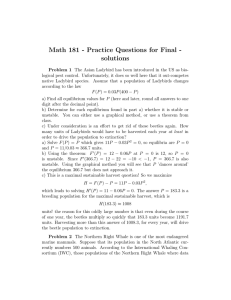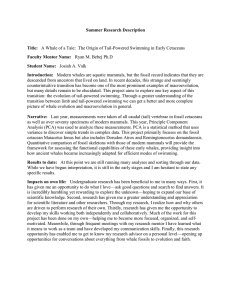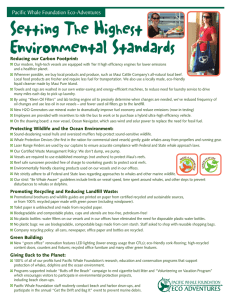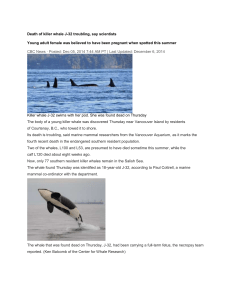Math 181 - Practice Questions for Final
advertisement
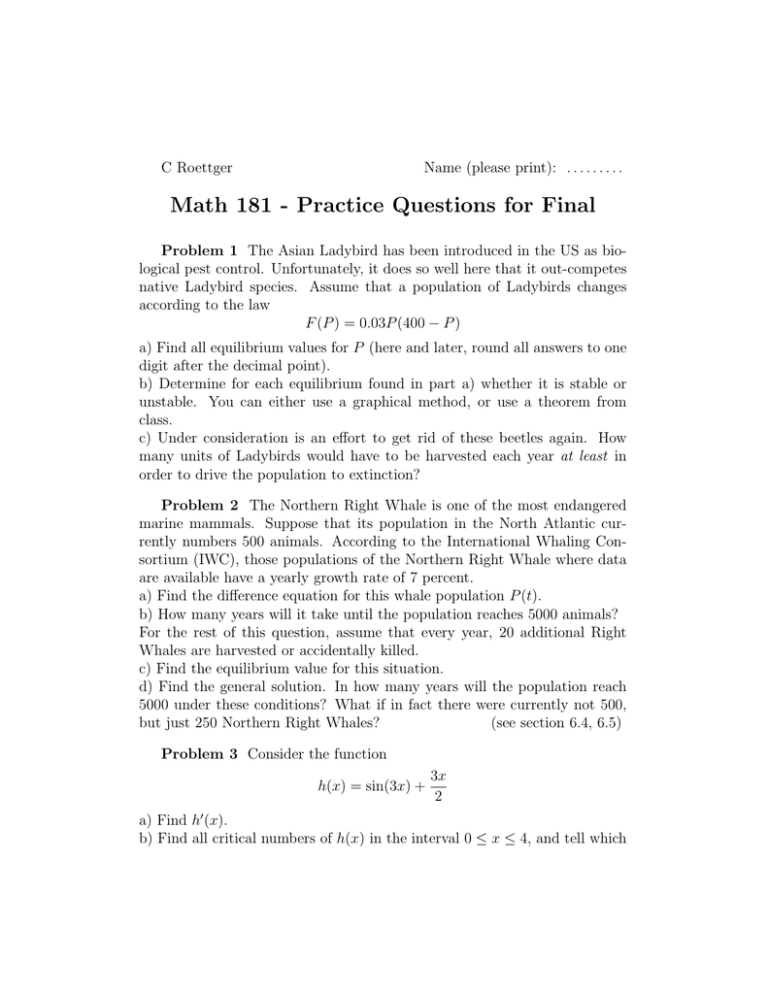
C Roettger Name (please print): . . . . . . . . . Math 181 - Practice Questions for Final Problem 1 The Asian Ladybird has been introduced in the US as biological pest control. Unfortunately, it does so well here that it out-competes native Ladybird species. Assume that a population of Ladybirds changes according to the law F (P ) = 0.03P (400 − P ) a) Find all equilibrium values for P (here and later, round all answers to one digit after the decimal point). b) Determine for each equilibrium found in part a) whether it is stable or unstable. You can either use a graphical method, or use a theorem from class. c) Under consideration is an effort to get rid of these beetles again. How many units of Ladybirds would have to be harvested each year at least in order to drive the population to extinction? Problem 2 The Northern Right Whale is one of the most endangered marine mammals. Suppose that its population in the North Atlantic currently numbers 500 animals. According to the International Whaling Consortium (IWC), those populations of the Northern Right Whale where data are available have a yearly growth rate of 7 percent. a) Find the difference equation for this whale population P (t). b) How many years will it take until the population reaches 5000 animals? For the rest of this question, assume that every year, 20 additional Right Whales are harvested or accidentally killed. c) Find the equilibrium value for this situation. d) Find the general solution. In how many years will the population reach 5000 under these conditions? What if in fact there were currently not 500, but just 250 Northern Right Whales? (see section 6.4, 6.5) Problem 3 Consider the function h(x) = sin(3x) + 3x 2 a) Find h0 (x). b) Find all critical numbers of h(x) in the interval 0 ≤ x ≤ 4, and tell which of them is a relative maximum and which a relative minimum c) Unrelated problem: solve (see 5.7). exp(4t2 − 2t − 1) = 1. exactly and to 3 digits after the decimal point (see 5.6). Problem 4 A drug is present in a patient’s blood, in a concentration of 25 mg per liter. Every hour, the kidneys reduce the amount of the drug by 12 percent. Assume that the patient has 18 liters of blood. (see 6.2) a) What will the concentration be after 4 hours? b) When will the concentration drop to 1 mg per liter? Problem 5 Consider the function (see 5.6) g(x) = 5 ln(x2 + 1) − 3x a) Find all intervals where this function is increasing. b) Find all intervals where this function is decreasing. c) Find all relative maxima and minima. d) Find the equation of the tangent line to the graph of g at x = 2.
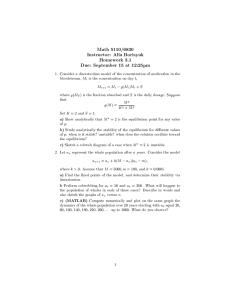
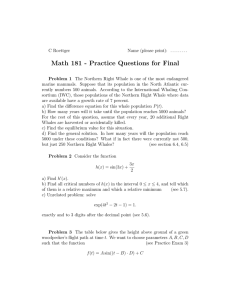

![Blue and fin whale populations [MM 2.4.1] Ecologists use the](http://s3.studylib.net/store/data/008646945_1-b8cb28bdd3491236d14c964cfafa113a-300x300.png)

